Landfill gas explosions taught the UK waste management industry the very real dangers of methane gas through hard experience. The industry learnt from a series of accidents, some of which are described below, plus a disaster in the water industry. That disaster was the Abbeystead Disaster, which was caused by a methane explosion in a large-diameter water pumping main
Sadly, there were penalties in terms of death and injury when the first landfill gas explosions occurred.
Parallel Experiences Should Have Acted as a Warning…
There were parallel experiences in the mining industry from many years before, which could have, from the start, warned the landfill operators to take precautions.
Despite those earlier experiences, it took several explosions before the landfill operators and environmental regulators took action on safety.
In hindsight, it is surprising that earlier action was not taken to prevent these landfill gas explosions. It had been within living memory when the terrible death-toll from the UK water industry's Abbeystead Explosion occurred in the 1970s. Those deaths had been extensively reported in the UK press.
When UK landfills got larger and started to make landfill gas (50% to 60% methane) in the late 1970s, there was already a memory of that disaster.
The methane explosion risk should have been well-known.
Thankfully, with current, greatly improved landfill practices, landfill gas explosion accidents of the type described here have become a thing of the past in the UK.
We describe below some of the most notorious and influential UK and US incidents of the 20th century. To a large extent, these have shaped the UK Environment Agency's landfill development requirements and gas migration prevention guidance. That guidance was used until the advent of the EU Landfill Directive in the late 1990s, and has been carried forward subsequently.
Current landfill gas safety requirements are now embodied in the EU ATEX Directive (and UK's DSEAR regulations).
More About the Abbeystead Disaster, Cumbria
The explosion at the Abbeystead valve house on 23rd of May 1984 killed 16 as a result of methane gas in the atmosphere:
The Abbeystead disaster occurred on the evening of 23 May 1984. That's when a methane gas explosion destroyed a waterworks' valve house at Abbeystead, Lancashire, England. A group of 44 visitors was inside the underground building at the time. They were attending a public presentation by North West Water Authority (NWWA) to demonstrate the operations of the station.
Eight were killed instantly by the explosion, and the others were severely injured.
The explosion also caused the concrete roof to fall down on to the group, destroying the steel mesh floor. And, throwing some of the victims into the water chambers below which rapidly filled with river water.
Another eight people subsequently died of their injuries in hospital.
An 11-year-old boy and his mother were among the dead. The official inquiry into the disaster concluded that the methane had seeped from coal deposits 3,937 feet (1,200 m) below ground and had built up in an empty pipeline.
The gas was then ejected into the valve house by the sudden pressure of water as the pumps were switched on.
The cause of ignition has never been determined.
The methane is thought to have been from natural sources rather than landfill gas. The accident provides a tragic example of the potential hazard posed by methane in tunnels and pumped water mains.
via Wikipedia
Read the BBC News report on the Abbeystead Disaster here.
The landfill gas explosion incidents follow:
Loscoe Explosion, Derbyshire
An explosion occurred in a bungalow adjacent to the landfill site at Loscoe during March 1986, when a large fall in barometric pressure occurred (29 millibars in 7 hours).
The explosion destroyed one bungalow. The resulting investigation showed two more houses had been unfit for habitation for the preceding nine months, and others for short periods.
Site History
The site was used as a brickworks from the mid-nineteenth century until the early 1970s.
The quarry in which it was situated comprised an elliptical hole with three stepped quarry faces. The quarry was part-filled with inert waste products from the brick-making, which ceased in 1971.
Permission was then granted for the tipping of inert materials only. From 1973 to 1975, a number of companies tipped at the site, until one firm acquired the sole rights and in 1978, purchased the site.
In 1977, a licence was granted to tip a wide variety of wastes, including 50 tons per day of untreated domestic waste.
The first signs of gas generation were in 1984. Lawns showed crack-lines of dead, dried grass, and trees began to wilt and die in the surrounding gardens.
Later, the soil around the affected areas began to heat up. The initial heating effect is thought to be have been due to the presence of methane-feeding bacteria.
From 1977 to 1982, amendments to the licence were granted to increase the quantities of domestic waste tipped. Extensions to landfilling were granted despite complaints from the residents of adjacent houses of vermin and flies.
Houses surrounded the site on all four sides; those on the fourth side were built in the 1970s.
Action Taken Following the Explosion
After the explosion, Derbyshire County Council monitored methane levels in the houses at regular intervals. Attempts were also made to draw the gas out of the tip by horizontal and vertical methane extraction wells. This proved only partially successful due to a perched water table (Open University literature 1989).
Flow rates of landfill gas generated from the site measured subsequently were 150-200 cubic metres of gas per hour, at a 30-35% methane content. 3-4% oxygen was present, or approximately 45-70 cubic metres of methane per hour.
After the explosion, landfill gas extraction wells were installed, and the landfill gas was extracted.
This was achieved using a grid of 17 wells, and the extracted gas was flared off through a purpose-built pump and flaring unit.
Other Landfill Gas Explosions and Dangerous Incidences
1. North Yorkshire
A house 50m from a waste-filled limestone quarry was seriously damaged by a methane gas explosion. The gas was generated from domestic and commercial waste dumped over a three-year period. This had migrated along natural fissures in the limestone underneath the house.
Precautions had been taken against gas migration as the site was filled including facing the quarry wall with clay and creating rubble ‘chimneys' within the waste. These chimneys and a permeable cover material had, however, become covered over in the final phase of operation.
There was no prior warning of the problem. But, for four days after the explosion high concentrations of methane were found in the drains of the area. Other houses in the vicinity were checked for methane, but only very low levels were recorded.
The remedial steps taken were to dig trenches into the waste along the rock faces and backfill these with imported rock, graded 75-250 mm.
Within two weeks of the trenches being excavated only trace levels of methane were recorded outside the site (County Surveyors Society, 1987).
2. Atlanta, Georgia, USA
In December 1967, a single-storey building was destroyed. Two people were killed and two were injured by a methane gas explosion. The building had a basement, which was bricked up. This sealed it, except for a pipe which connected the basement to the rest of the building. Landfill gas escaping from the pipe was ignited, possibly by a cigarette, and an explosion occurred. (Parker, 1987)
3. Winston-Salem, North Carolina, USA
In 1969, a gas explosion occurred in an armoury built close to a landfill site. The building had been erected seven years earlier when the landfill site was operational. But, about a week before the explosion, extra material was deposited over the site.
It is thought this caused the gas migration into the building. The explosion killed three people, and twenty-five were injured (Parker, 1987).
Conclusions
In all these accidents, the landfill gas explosions were caused by alterations to the pathways for gas migration. This was done after capping, or after the closure of the site. These alterations or blockages caused the landfill gas to accumulate in an enclosed area, build up and exceed the lower explosive gas-concentration limit.
Therefore, the problems associated with landfill gas, both in the gaseous phase and dissolved in landfill leachate are a long-term explosion risk.
Such risks may still cause landfill gas explosions in the future, and therefore landfill gas explosion risks must always be carefully assessed and managed. Throughout Europe, local regulations apply in compliance with the EU ATEX Directives. In England and Wales, they are known as the DSEAR (Dangerous Substances and Explosive Atmospheres Regulations).
We hope that you found this article on landfill gas explosions interesting. If you have knowledge of a similar incident, please add as many details as you can, to the comments below.
Steve Last of IPPTS Associates is an expert with considerable experience in carrying out DSEAR Risk Assessment for Landfill Sites.
Contact Steve for a quotation for your DSEAR Risk Assessment.
The Loscoe Landfill Gas Explosion: When Weather Turned Deadly at a Derbyshire Landfill
How a sudden drop in atmospheric pressure triggered a catastrophic landfill gas explosion that destroyed a home and changed landfill safety forever On a seemingly ordinary day in March 1986, the residents of Loscoe, a small village in Derbyshire, had no idea they were living above a ticking time bomb. What happened next would become […]
Landfill Site Permit Applications – The Role of Risk Assessments in Emissions Control
Landfill site emissions risk assessments are a mandatory requirement for environmental permit applications (previously known as Landfill Site PPC Applications). They identify possible hazards to the environment and public health from landfill gas and leachate. The procedure calls for a thorough examination of landfill emissions, including assessments of the effects on the air, groundwater, and surface […]
Understanding Landfill Gas Risks Before Buying Property Near a Landfill
Buying Real Estate: Understand Landfill Gas Risks before buying land near a landfill! Landfill sites can produce methane, and that can continue for many years. It has been a known issue for years. Site operators used to see small landfill gas fires as minor problems when they first started to happen in the 1970s in […]
Landfill Gas Migration Defined and Explained
Landfill gas migration is defined as the process which occurs when the landfill gas generated within a landfill moves from the site of original waste deposition out of the landfilled waste, into the surrounding environment. This may take place as a result of the gas flow induced by the positive gas pressure produced by the […]

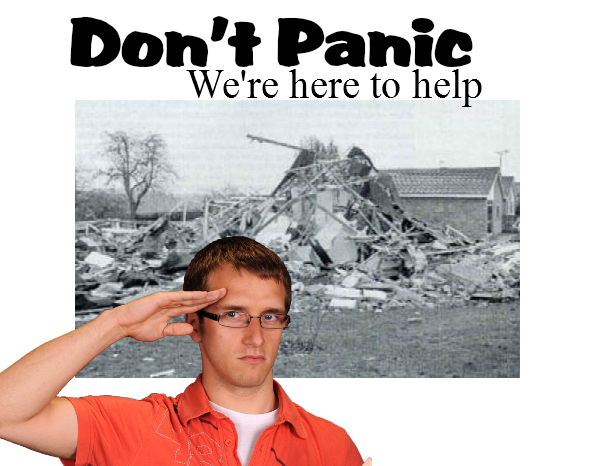

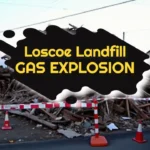

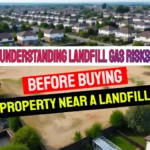

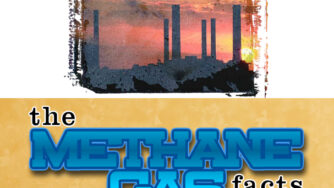
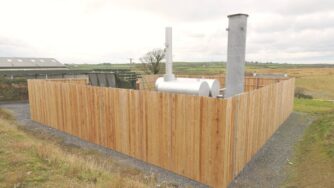

Good information but please consider updating this info. i could use some later case studies. Thanks.
That would wake you up!
This detail is so critically relevant to any British Fracking sites and really needs to be circulated.
Thank you for the time and effort taken to present this, it is invaluable knowledge.